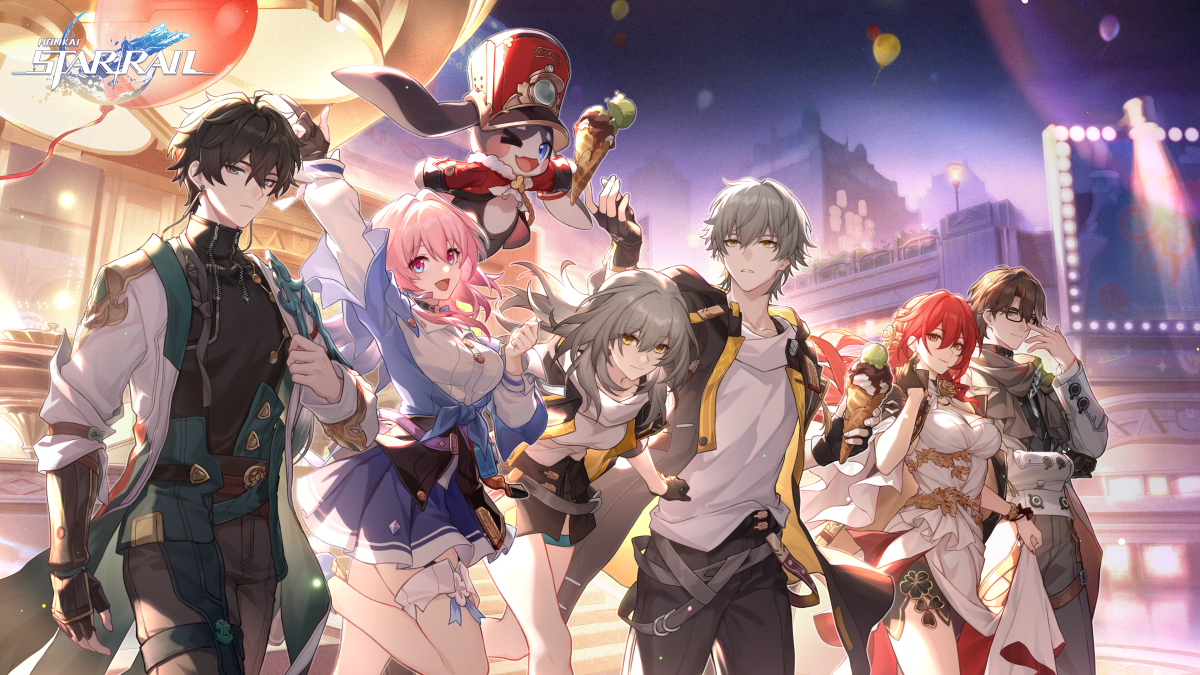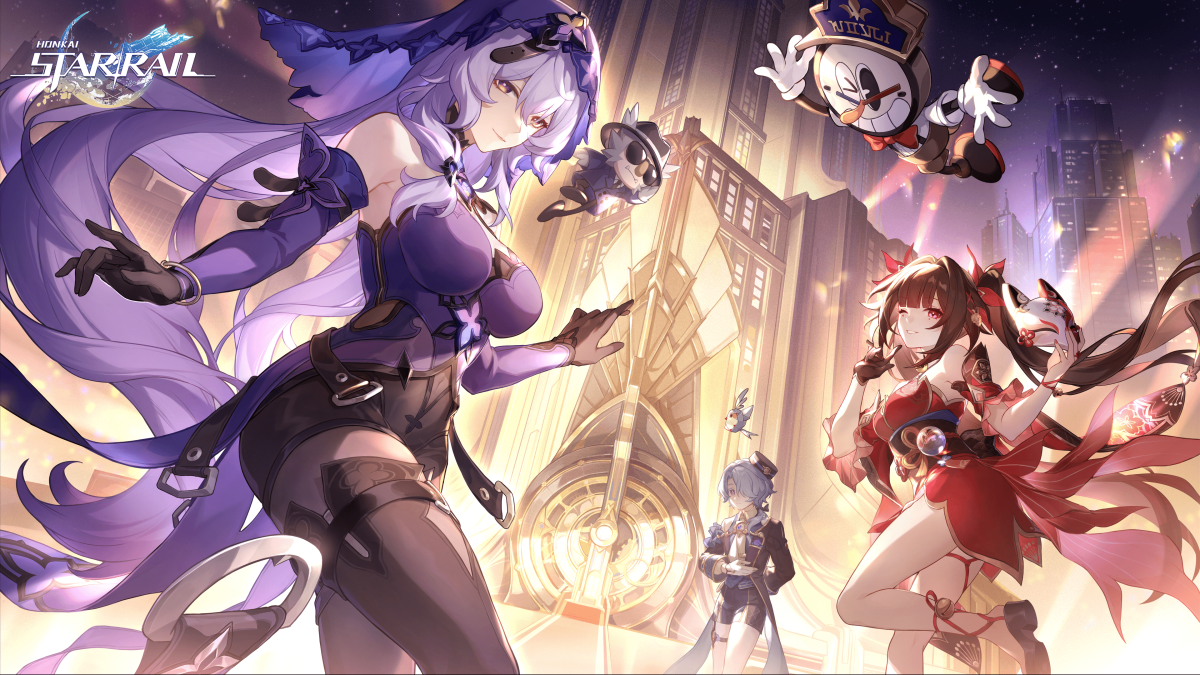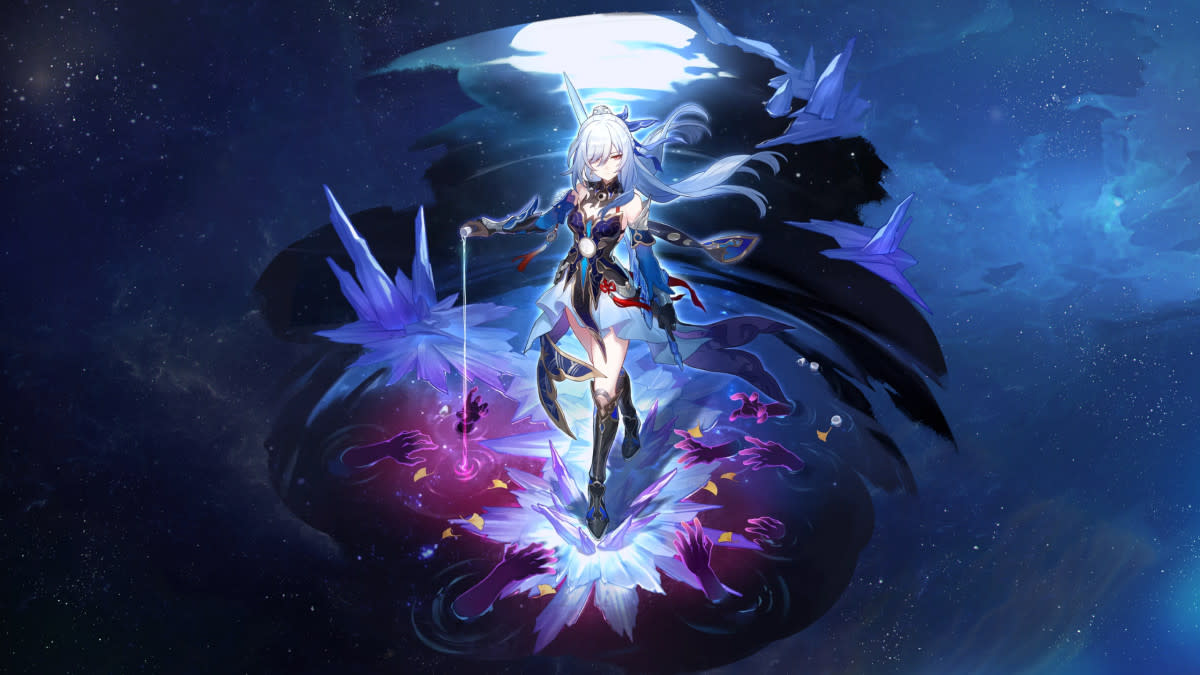Creator of Fate Believes China Is Otaku Culture Trendsetter Now

honkai-star-rail-fate-interview-1
In an interesting collaboration, Honkai: Star Rail lead producer David Jiang had a long chat with the creator of the popular Fate series, Kinoko Nasu – better known simply as Nasu. Translated by Crunchyroll, their conversation provided some fascinating insights into their inspirations and thoughts on game design as well as general otaku culture.
Jiang revealed that the themes of “love and justice” from Fate/Stay Night: Unlimited Blade Works were a major inspiration for the story of Honkai: Star Rail. Fate’s Servants also serve as a great source of inspiration for Honkai: Star Rail’s heroes: “During the early stages of planning Honkai: Star Rail, when discussing what kind of story to create, even though I couldn't visualize the specifics at the time, I had already conceptualized the desire to create a story about heroes. The heroic figures that came to mind at that time were the Servants and characters from the Fate series.”

HoYoverse / TYPE-MOON
There are some more direct references as well, such as the character of Clara, who is a small girl protected by a giant robot called Svarog. They are loosely modeled after Ilya and Berserker from UBW.
He explained that TYPE-MOON’s works are greatly admired by the people at HoYoverse, who have previously visited the studio to hear Nasu speak. It’s probably not a huge coincidence that HoYoverse chose Ufotable to make its Genshin Impact anime, since the studio did such a great job with TYPE-MOON’s IP in the past.
“Another influence comes from the overall idealism of the work,” Jiang continued. “As the company grows, there are times when we have to consider things based on profitability. However, the more that such times arise, the more it becomes necessary to reconsider what our ideals are. Profitability is important, but I always remind myself to think about my own desires and various options beyond profitability.” He said he often asks himself “What would Archer decide in a situation like this?”
This sense of idealism touches the commercial arena as well. Jiang said that HoYoverse follows a philosophy of achieving long-term results as opposed to trimming everything towards the goal of short-term profits.
“Perhaps we also have the right to talk about this, i.e., not relying on character performance as the selling point,” Nasu responded. “Of course, powerful performance is the ultimate pursuit of game developers, but the appearance and internal characteristics of characters, as well as the emotional projection that players can get from characters, are equally important. Players first judge whether the character can become their favorite. Personally, I think this is where we and HoYoverse have something in common. After listening to Mr. David's previous story, I can reaffirm this point.”

TYPE-MOON / Ufotable
Nasu, who’s been playing Genshin Impact for a long time and recently got started on Honkai: Star Rail with the release of its PS5 version, asked the HoYoverse employee for buffs to Klee, the little pyromaniac from Genshin Impact’s starting region of Mondstadt, since a friend of his requested that he pass on the message. He also tried playing Honkai Impact 3rd on his phone, but explained he couldn’t quite get into the mobile controls, so he gave up on trying.
Upon first seeing Honkai: Star Rail, the Fate creator couldn’t fathom it being a free title: “After glancing at the game's content, my initial reaction was, ‘Why not charge for the base game instead of making it free-to-play?!’”
He explained that he saw similar design principles behind Honkai: Star Rail and Fate/Grand Order: “This is also one of the key points we focused on [...], that a long-term product must provide players with a safe and enjoyable gaming environment. While RPGs can depict a world with infinite possibilities, they also require a clear and well-defined structure. When I first encountered [Honkai: Star Rail], my impression was that all the features are geared towards long-term operations and have been very well thought out.”
Nasu said that he’d “play for at least four hours a day” if he wasn’t busy with work and hopes that he’ll catch up with the main story soon – he’s currently on the second of four worlds available in Honkai: Star Rail.
Nasu had nothing but praise for HoYoverse for turning “the dreams of otaku culture into a reality, and their operations and the game's highly complete nature made me want to shout ‘Thank you’ into the sky.”

HoYoverse
David Jiang admitted that HoYoverse made a few mistakes with Honkai: Star Rail’s development process in the beginning: “Initially, the storyline and gameplay were designed separately by different teams. In terms of results, the overall integration of the game wasn't great, and we struggled for quite a while.”
“To solve this problem,” he explained, “we adopted an approach that involved holding weekly meetings between the scriptwriters and system developers. For example, if the system team proposed adding Roguelike gameplay, the story team would provide a story plan that complemented that gameplay, strengthening the two teams' collaboration. Then, the two teams would spend 1 to 2 months coordinating. Once both sides fully understood each other's ideas, they would enter the formal gameplay development phase.”
“Based on this, I personally believe that different teams having a mutual understanding of each other's work is extremely important. Story writers should also play games more and fully understand the game systems, while the system development department should not only focus on programming but also watch more animation,” he concluded.
The two creators also discussed the intricacies of creating in-game events around holidays. Jiang explained that HoYoverse was mostly focused on creating recurring in-game festivals independently of the real-world calendar, since its games were global experiences and many parts of the world have very different holidays.
Nasu laughingly called HoYoverse’s global reach its “only weakness” and said this was much easier for Fate/Grand Order, since it’s simply linked with Japan and its domestic audience.

HoYoverse
Steering the conversation towards character design, Nasu spoke about some observations he made in regards to HoYoverse’s characters: “Up until Honkai Impact 3rd, the character designs in the HoYoverse always made me think, ‘Hmm, the styles are basically what their employees like.’ But in Genshin Impact, the character designs no longer adhere to what the employees like. Based on Chinese-style characters, elements from other countries like France and Germany were added. While maintaining the characteristics of otaku culture without being over the top, the character designs were significantly improved.”
He continued: “And this design characteristic was further refined in Honkai: Star Rail, where the design style is so distinct that everyone instantly thinks, ‘Ah, these are characters from Star Rail.’ Regardless of the character styles, their core is based on Chinese design. This feeling is very strong when I play Honkai: Star Rail. So recently, I've started thinking, ‘This design direction should represent a completely new style of otaku culture from China…’ Whenever HoYoverse is mentioned, people often think about their team size and development capabilities first, but their design capabilities are also rather outstanding. Every time the game is updated, I feel this even more strongly.”
Jiang thanked Nasu for the praise and elaborated on HoYoverse’s approach: “To ensure the completeness and quality of our work, the character style must be consistent with the worldview. So, as Nasu-sensei mentioned, whether it's Genshin Impact or Honkai: Star Rail, the design style must follow the path of making it instantly recognizable as a specific work. But at the same time, we need to consider a question: ‘If we maintain this approach, will the freshness of new characters diminish for fans?’ In other words, will people become too accustomed to this type of design? To create a long-term game, I think it's necessary to gradually modify this approach.”
Related: Honkai: Star Rail – Gallagher Guide: Best Light Cones and Relics
“If the patterns are too similar, it'll definitely diminish the players' sense of novelty. You're right about that,” Nasu agreed. “In this sense, Japan's otaku culture is a product of the Galapagos phenomenon. This culture is like a fluid slime that leads to things that were popular 10 years ago while being completely different from what is popular now. From a cultural perspective, this phenomenon is quite strange. Why can't things that represent our desired actions be standardized...?”
Quoting a saying about the ebb and flow of entertainment products following a cycle, Jiang said: “When comparing the otaku cultures of Japan and China, although there are significant differences between the two for various reasons... personally, I feel like what's currently popular in China often resembles what was popular in Japan slightly earlier. Meanwhile, constantly coming up with new ideas and solidifying trends repeat themselves, and sometimes the timelines and trends of the two countries perfectly align, while at other times they don't.”
Nasu offered a bit of a different point of view regarding this subject: “It feels like the topic we're discussing ultimately comes down to how to protect traditional culture. Of course, it can still be protected... but allow me to offer a radical view – otaku are more willing to dedicate their souls to entertainment products compared to traditional culture!”
“I actually think that China's otaku culture is at the forefront of popularity now.”
“If someone invents something good, it should be improved upon,” he elaborated. “So, at least for otaku culture, it's more inclined to continuously repeat the good things within itself rather than preserving its own country's culture.”
“The same goes for Chinese-made games,” he mused. “There are those that adhere to the classic Wuxia style and companies like the HoYoverse that take the route of fusion and improvement. The former belongs to the category of traditional culture, while the latter, like the HoYoverse, wants to push boundaries and create what they personally love. This is probably an accumulation of otaku culture. Mr. David mentioned earlier that what's currently popular in China often resembles what was popular in Japan slightly earlier... but I actually think that China's otaku culture is at the forefront of popularity now. It's quite evident, as long as you can think, ‘Hmm, this is exactly what today's otaku fans love.’ It's not difficult to understand.”
Not quite agreeing with this perspective, Jiang said that there should be a distinction between “mass-market products and otaku-oriented products.” He admitted that in regards to the former, most of the differences between the two countries have vanished over time. However, he still believes that China is slightly lagging behind Japan for the latter, bringing up the minefield-style fashion culture as an example.
“Nevertheless, Japan and China have always been neighboring countries,” he continued. “From a product standpoint, as mentioned by Nasu-sensei earlier, characters designed with a Chinese aesthetic as their foundation have been widely accepted in Japan. We pay great attention to the acceptance of such design styles among Japanese players.”

HoYoverse
He named Jingliu from Honkai: Star Rail as an example, whose design incorporates many orchid cacti elements: “In China, there's an idiom, ephemeral orchid cacti, which describes something that's gorgeous but fleeting; a momentary beauty. This aligns with Jingliu's circumstances... Perhaps it's because Japan and China share cultural similarities that this Chinese aesthetic is more easily accepted by Japanese players. Conversely, users from regions outside the Asian cultural sphere, such as North America and Europe, may find it more challenging to appreciate this aesthetic concept. That being said, as the Internet and social media have become more widely used, there are also many Western players who can understand and analyze the design concepts of Chinese-style characters like Jingliu and Blade.”
Harkening back to character design and its balancing with economic interests, Jiang said: “The survey data regarding user preferences for characters is shared with the directors responsible for character design. After all, they are only humans, and once they know that users like the characters they've created, they feel a sense of accomplishment in their work.”
“Speaking of characters implemented in games, I'd like to discuss a more real-world topic,” he continued. “Every character, to some extent, has a goal to generate revenue. Because of this, the basic designs of different characters may vary. Balancing revenue and design has always been a topic that must be continuously explored. So when we create certain characters, we lower our commercial expectations for them and approach the creative process with a sense of freedom. Sometimes, we even challenge certain unique character traits that may attract new user groups. For example, characters like Qingque, who slacks off at work all day; Guinaifen, whose only concern is increasing her fan base; and Sampo, whose words and behavior are always highly suspicious... and so on.” This is a good example of HoYoverse’s long-term planning in action.
Related: Honkai: Star Rail – Acheron Guide: Best Light Cones and Relics
Nasu supported this point, fielding an example he’s read in an interview with a member of the Street Fighter 2 development team. They were asked why a character like Zangief made it into the game, to which they responded: “Once you have a character like Zangief for comparison, characters like Ryu with an average physique become even more eye-catching.”
“In other words,” Nasu summarized, “a creative work cannot only have popular characters. If we make a fetish black hole, the diversity of the world suffers.. In terms of results, even protagonist-like characters that are somewhat lacking in personality can have their own unique features.”
Nasu emphasized that it’s important for creatives to keep their personal desires when it comes to character and story design in mind even after becoming successful commercially, which the HoYoverse representative agreed with. “No matter how much the scale increases, I still believe that valuing personal desires is crucial. In other words, if you don't value your personal desires, you can only create mediocre products. If you aim to create products that surpass the average, you must remain true to your desires,” Jiang said. “We mentioned the topic of sharing user feedback with creators earlier, but for them, this feedback is only a reference, and a tool to help them examine and adjust their thinking. Even if they accept some feedback from fans, they won't make a complete U-turn in their characters' directions. Overall, we fully trust the creators' own sensibilities.”
Nasu used the opportunity to gush a bit more about HoYoverse in this regard: “It might sound a bit biased, but characters born out of a creator's love tend to be more charming. When playing Genshin Impact and Honkai: Star Rail, I had a strong feeling that, ‘Wow, they've been so meticulous,’ which made me admire the development team's passion. The dynamics of the characters, the beautifully animated story events... Every time I see them, I'm struck by the feeling that no matter how large the scale of the HoYoverse is, the staff are still so full of passion and never slack off.”
Naturally, the two creators wouldn’t say if HoYoverse and MOON-TYPE would ever collaborate on something – but given the mutual respect, it certainly doesn’t seem out of the question.
